A THREE-year project on the National Trust’s Holnicote Estate, on Exmoor, has successfully reconnected a section of river to its floodplain to create a new and instantly different waterscape using an innovative restoration technique first pioneered in America.
It is the first time the full approach – the ‘ctrl alt delete’ – of a river re-set, has been attempted on a main river on such a scale in the UK.
The ‘Stage 0’ technique, as it is called, has fully and instantly reconnected the river waters with the surrounding floodplain by filling in three-quarters-of-a-mile of a managed, straightened, and deepened section of the River Aller to dramatically create a new 17-acre area of wetland.
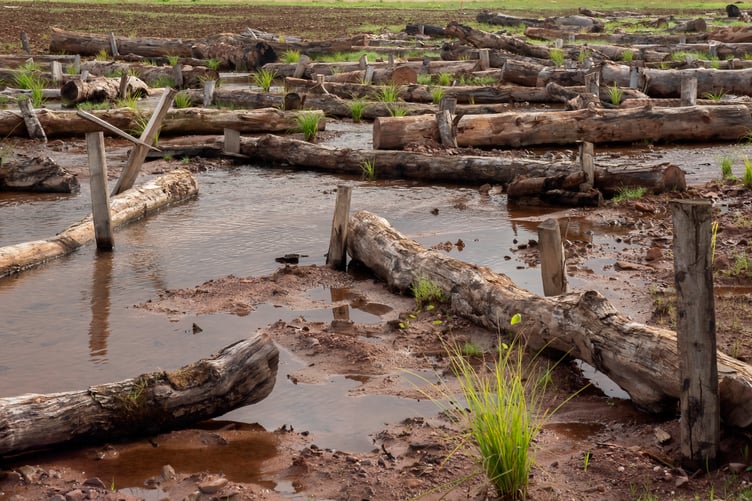
‘Stage 0’, pioneered in Oregon, USA, is an approach to river restoration which suits only particular sites and can reverse centuries of historical drainage to develop rich and abundant refuges for nature that also benefits people.
The new Exmoor waterscape will help slow the river flow and hold water in the landscape to help combat flooding and drought, as well as increasing the diversity of wildlife and tackling the impacts of climate change.
Waterscapes like this can also store more carbon over time.
The additional trees and scrub which grow will create shade and wetter soils and help create a cooler microclimate in the restored area.
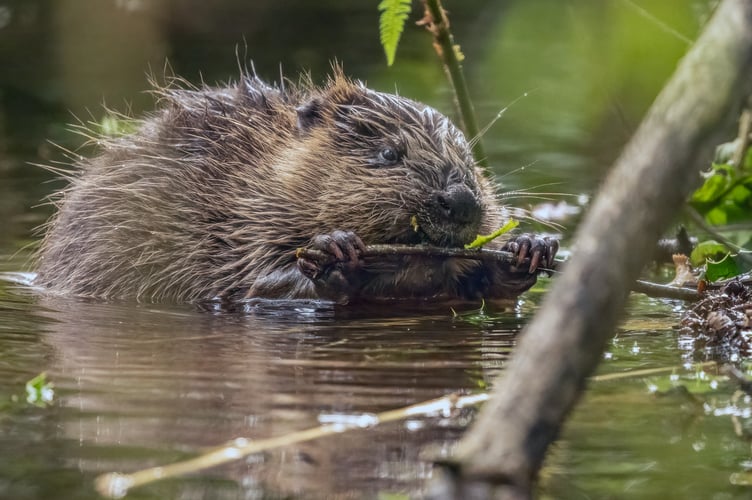
A total of 67 acres of land will benefit with lowland meadow, wood pasture, and wildflower meadows, resulting in a more diverse and abundant river catchment.
National Trust project manager Ben Eardley said: “At last, the river can flow as it was always meant to.
“After years of research, planning, and a successful pilot project, we can finally watch as the river evolves to find its own course, spilling out into the floodplain to create a rich mosaic of a wetland landscape.
“This is a hugely important moment, greatly increasing the health of our river catchments and helping them and the whole ecology of the wetlands recover and thrive.
“In the UK, we have sadly lost over 90 per cent of our wetland habitat.
“They are vitally important and can be likened to rainforests in terms of their ability to store carbon, their diversity of wildlife and the food sources they offer, and their cooling effect on the landscape.
“This wetland will also hold more water during floods or drought ensuring it is better able to cope with extreme weather events or changes in climate, helping local communities and protecting farm businesses.

“It will also help improve the quality of the water by capturing and filtering the water as it runs through the landscape.
“Everything combined will rejuvenate the surrounding landscape.
“It is a win-win situation.”
Meticulous preparations for the major transformation of the landscape involved the local community and volunteers who planted 25,000 wetland trees, including willow, bird cherry, and black poplar, which have already started to regenerate with new saplings growing.
Water voles were also re-homed to an adjacent area and fish and other aquatic species such as eel were temporarily removed during the works but have now started to move back into their new home from up and downstream.
The re-setting of the river, and the true grunt of the work, involved moving more than 4,000 tonnes of earth to fill the river channel and placing 700 tonnes of fallen timber harvested from the estate within the floodplain to provide important ‘deadwood’ habitat on which 40 per cent of UK wildlife partially depends.
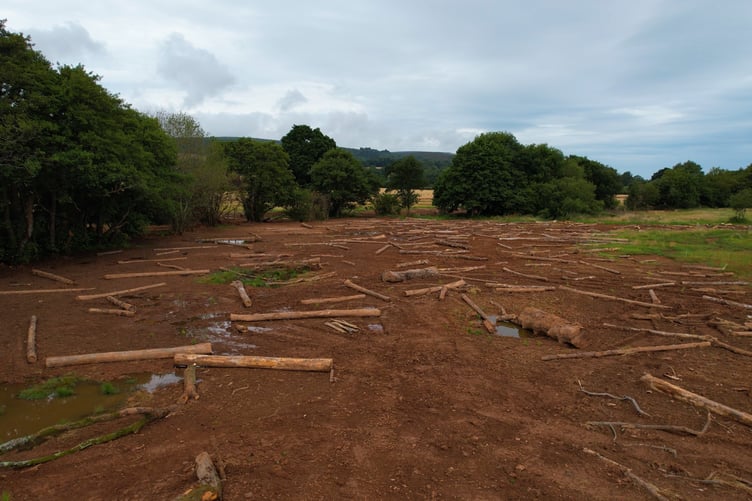
Deadwood is also an important habitat which has, like wetland, been mostly lost in the UK.
Once the work was completed, the team sowed a quarter of a tonne of floodplain wildflower seeds, including wild carrot, devil’s bit scabious, and meadowsweet across the site to attract pollinators such as bees and butterflies.
Greater tussock-sedge was also planted as the tall, grass-like plant creates large mound structures and grows well in wet, boggy areas, providing ideal nesting and hiding spots for water voles and many other wetland species such as yellow flag iris and marsh marigold.
The project was completed at the end of July and a whole new landscape has already started to emerge as the river channel has connected to the floodplain to form a complex waterscape with channels, pools, wetlands, and marshes.
Mr Eardley said: “Despite the three years of planning, it has been incredible to witness the significant changes already happening with wildlife literally moving back into the site straight after the work was completed.

“Through the raising of the water table it has created the optimal conditions for an explosion of vegetation growth with the regeneration of thousands of trees alongside those we planted last winter, and water-loving plant species self-seeding.
“As for wildlife benefits, we are already seeing more of what was here before, in particular birds like house martin and wagtail and raptors such as kestrels and buzzards - but also birds that were not, such as egret and heron, and amazing insects such as dragonfly.
“The work has also created the perfect conditions to attract a huge number of amphibians such as frogs and toads.
“It is so heartening to see wildlife recover and recapture the site so quickly.
“When you think about just how much nature we have lost – it is projects such as these that make you realise how quickly we can make a difference and start to reverse the damage we have unwittingly caused our native wildlife, particularly over the last 70 years.”
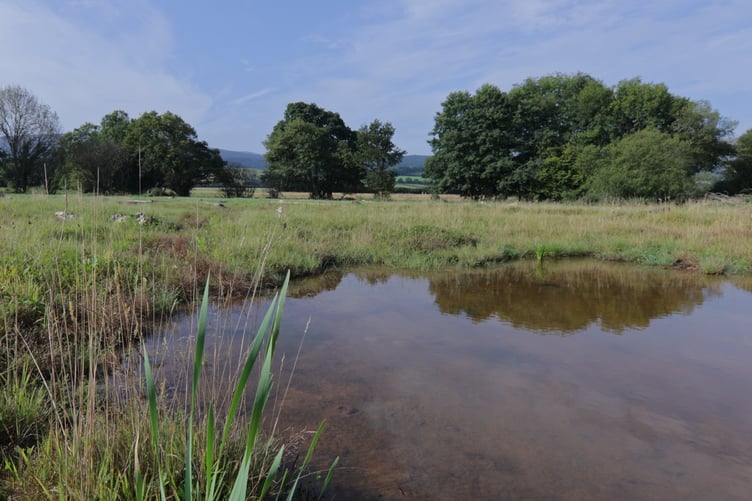
The National Trust project was made possible thanks to the Interreg 2 Seas Co-Adapt programme and the Environment Agency.
Both organisations helped fund the work together with the Somerset Rivers Authority (SRA), Green Recovery Challenge Fund, and Frugi.
Careful monitoring of the project will guide future floodplain reconnections in the UK and abroad.
National Trust land and nature director Harry Bowell said: “More severe floods and droughts are predicted in the UK due to climate change and we must work hard now to create the best possible conditions to equip our landscapes and nature to respond.
“Our wildlife is also declining even faster in fresh water than on land or in the sea due to factors such as pollution, centuries of river modification, and invasive species.
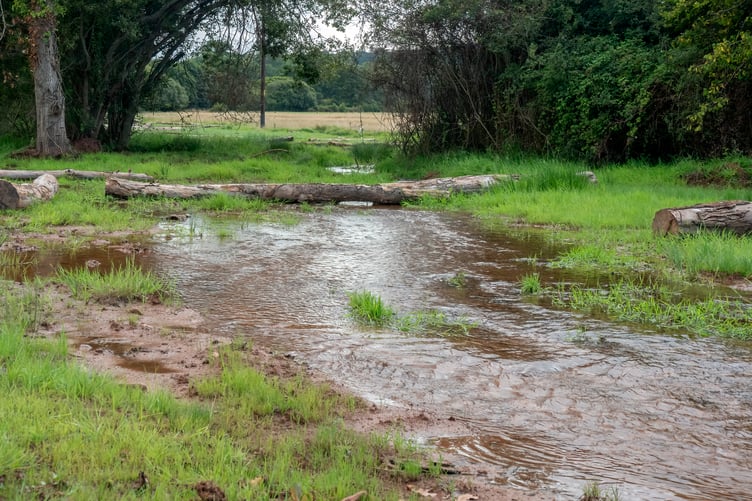
“It is hard to comprehend, but only 14 per cent of the rivers in England are in good health.
“Urgent action is needed from everybody, especially Government, Government agencies, developers, water companies, nature organisations, and landowners, to reverse this trend to ensure our rivers are clean and healthy, and full of wildlife once more.
“At the trust we want to embrace the latest evidence and explore new techniques on how to make our landscapes more resilient as temperatures continue to rise and to help tackle the nature crisis.
“Working in partnership, and at pace, with bodies such as the Environment Agency is exactly what we need to be doing more of as we face into these challenges.
“This project is a fantastic example of how this can be done through our collaborative efforts.”
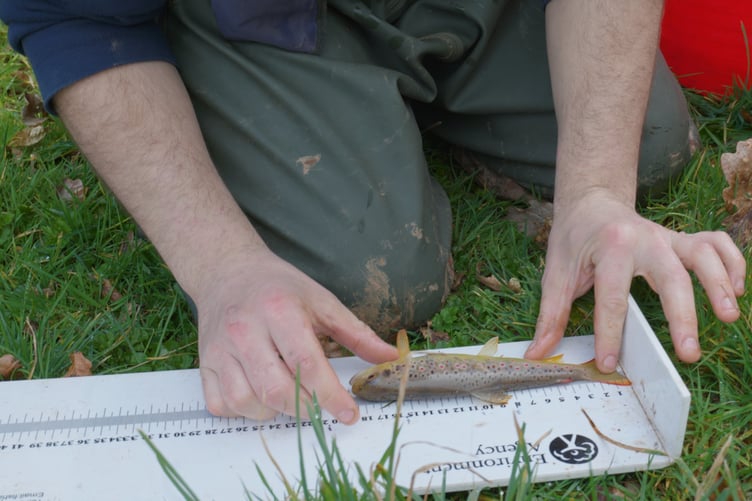
Environment Agency catchment co-ordinator Matt Pang said: “Centuries of modifications to our river systems is one of the key pressures affecting our freshwater ecology and this will only be exacerbated by the impacts of climate change.
“Allowing our rivers to function more naturally will create new and diverse habitat for wildlife and can help them become more resilient to changes in climate.
“This pioneering river restoration technique has the potential to deliver a wide range of benefits to both people and wildlife and could be a vital tool in tackling the climate and nature crisis.
“The Environment Agency is thrilled to be working in partnership with the National Trust on this project and is looking forward to seeing how the site develops over the coming years.”
Somerset Rivers Authority (SRA) chairman Cllr Mike Stanton said: “After so many years of hard work and planning, it is great to see this scheme flourishing.
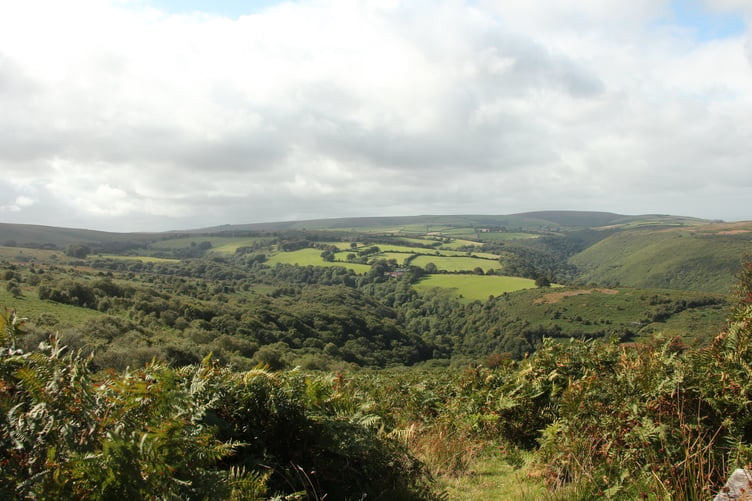
“I am delighted that we have helped the National Trust get to this point.
“The SRA exists to help people achieve more than they could on their own, to reduce the risks of flooding and improve Somerset’s environment, so this scheme has long been a really exciting prospect.
“It is satisfying to see what a big difference it is making already and to be learning lessons from it for other places in Somerset.”
The project is part of the National Trust’s multi-million-pound ‘Riverlands’ project announced in August, 2018, supporting four river catchment schemes around England and Wales.
More information about the Riverlands project is here.




Comments
This article has no comments yet. Be the first to leave a comment.